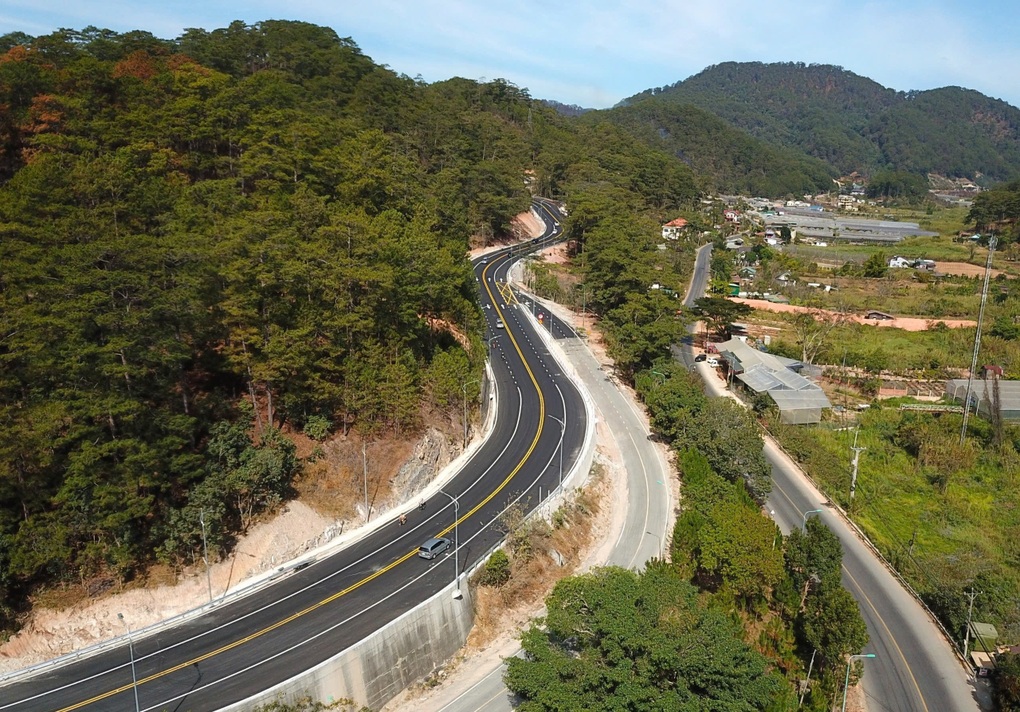The Lâm Đồng Provincial People’s Committee has tasked the Ministry of Finance with reviewing and advising on two bypass route designs for Da Lat City. The 9.5km bypass project, approved for investment by the Lâm Đồng People’s Council in 2023, will connect the foot of Prenn Pass to National Highway 20, passing through Đa Quý village in Xuân Thọ district.
 Two bypass options for Da Lat, differing by 75 billion VND – 1
Two bypass options for Da Lat, differing by 75 billion VND – 1
Two Proposed Bypass Route Designs:
The Lâm Đồng Provincial Department of Transport Project Management Board has presented two design options.
Option 1:
- Length: Approximately 9.4 km
- Investment Cost: Approximately $655 million
- Features: Includes 6 elevated bridges totaling 780 meters to navigate the steep mountainous terrain.
- Land Acquisition: Approximately 35 hectares, including 19 hectares of forest. Estimated excavation volume: 2.1 million cubic meters. This option represents a more cost-effective solution.
Option 2:
- Length: Over 10 km
- Investment Cost: Approximately $730 million
- Features: Incorporates 6 overpasses to navigate the terrain, with a higher overall investment cost.
- Land Acquisition: Approximately 32 hectares, including 18 hectares of forest.
Comparison of the Two Options:
Option 2, with its higher investment cost, envisions a longer route, potentially better suited to the complex terrain for long-term efficiency. Option 1, while more cost-effective, necessitates significant earthwork, which might impact construction time and land acquisition, particularly in forested areas.
Potential Impacts:
The construction of the Da Lat bypass will directly affect land areas, natural resources, and the environment. A thorough assessment of both the positive and negative impacts on the local community is crucial to finding the optimal solution.
Conclusion:
Both proposed Da Lat bypass designs have their own strengths and weaknesses. The selection of the most suitable option should take into account various factors, including cost, efficiency, environmental impact, and local community implications. Further in-depth analysis and careful consideration of both designs are necessary for an optimal decision.
Source:



